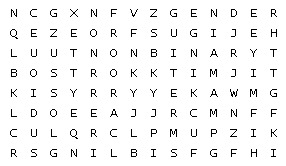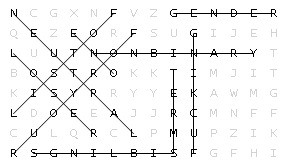#Listof
Explore tagged Tumblr posts
Text
Nearly all the major nuclear powers including the United States, Russia, and China are now significantly increasing their nuclear arsenals in size, capability, or both. The significant increase in the nuclear arsenals in size, capability, or both are raising the risk of nuclear war. Here's a list of countries with Nuclear Weapons worldwide.

Click here for read more:
0 notes
Text

JAMES NOOOO
6 notes
·
View notes
Text
Top distance mba colleges in gurgaon with fees
Searching for top distance MBA colleges in Gurgaon that offer quality education at prices you can afford? You’ve come to the right place! Our list of the top distance MBA colleges in Gurgaon are affordable and competitive in price while providing excellent education to build your career.
For more visit this site
Contact Us: +91 9625266808
Name :- umeacademy.com
Email Id :- [email protected]
Address :- Gurgaon, India
#Topdistancembacollegesingurgaonwithfees#Topdistancembacollegesingurgaonwithlowfees#Topdistancembacollegesingurgaonwithfeestructure#Top10MBAcollegesinGurgaon#TopMBAcollegesinGurgaonwithfeestructure#Listof MBA colleges in Gurgao#MBAcollegesinGurgaonwithoutEntranceexam
0 notes
Text
song requests for my band to sing ??
1 note
·
View note
Text
My "lorem ipsum" is "keys wallet phone"
#Posts that are meant to be incomprehensible#Bus basically#If there's a listof thing#I will try to repeat the list in my head#But unless ive made a default phrase to fall back on its just#Keys wallet phone#Plans for the night? About to go out? Ingredients? Morning routine? Its all the same keys wallet phone#Brought to you by the gang trying to add in new default phrases for common lists
0 notes
Text
Feanorian Week 2025,
For @feanorianweek this year, I've put together a tiny anthology listof one-shots I've written about Arda's most Doomed family.
This Living Earth. Maedhros had loved Beleriand, once.
Orion. The Hunter rose in the sky every twilight in the wake of Gil-Estel, and faded from the starry fields chasing it still.
Shadow-folk. Hail Gil-Estel, brightest of stars, called the mariners, the travelers, the honest merchants and worried fishermen, the children orphaned by war.
Labours of the Living. Míriel of the needle with her strong will distracted from her craft! It had not happened before, even when she had been wounded, cold and famished; it happened far too often now.
The Aching. "Explain yourself again," Maedhros suggested, eyes on the far wall. "But do so without saying Finrod be dead."
Humble the prince crowned with myrtles. “O, but thou art mightily displeased,” Annatar noted, and allowed himself to sound intrigued, a little malicious. He allowed himself too much, when it came to the Lord of Eregion.
In Wholesome Majesty. Tar-Minyatur keeps a captive. This goes about as well as you'd expect.
The Lord Of The Lake. Caranthir changes throughout the centuries, but never as much as he should, and never enough not to be his father's son.
20 notes
·
View notes
Text
am i jirai? or am i just someone who is a poser and isnt mentally ill enough. genuine question. ireally want somewhere i can fit into. iwant a community and friends like me. someone please give me a listof what would make me jirai… or something…. ibeg..
sorry for this andall the jirai tags or if imisused tags ijust really want to know because ikeep thinking im just a poser who wants to force itself into somewhere so itcan fit in and have a community and have friends who are like it. forgive me im so so sorry. iam so so sorry if thisis worded horribly. thisis embarrassing to even post forgive me formaking a fool ofmyself..
#please forgive me iam so stupid#forgive me for being a fool#jiraiblr#jirai lifestyle#landmine jirai#jirai danshi#jirai girl#jirai boy#landmine type#lifestyle landmine#landmine girl#landmine boy#landmineblr
4 notes
·
View notes
Text
the listof people who are dear to me is so long and evergrowing and once youre on youre never off and i will always hold you in my heart that will never change
19 notes
·
View notes
Text

listof gender neutral terms foryour nonbinary siblings
One. Fucking Loser
Answer:

list of gender neutral terms for your nonbinary siblings
1. Fucking Loser
25K notes
·
View notes
Text
yooooooooooooooooumade #pepethefrog i k n o w you #zorin_feel_me about #nvidia_drivers @cnet @wired @techpowerup @debian @linux .@debian @ubuntu .@gentoo @gentoo @pcwelt #hurrdurr #senility #riiiiiight as #dpkg dislikes w ildcards likelyfor goodreasons and cutandpaste a pain inthe arse : #cat #cut pipeline into #dpkg #saysni toalon g paininthearse listof #nvidia gpufiles prepared but the b e s t allofthat with realpaininthearse saturdaynight on hemmoroi....
yooooooooooooooooumade #pepethefrog i k n o w you #zorin_feel_me about #nvidia_drivers @cnet @wired @techpowerup @debian @linux .@debian @ubuntu .@gentoo @gentoo @pcwelt #hurrdurr #senility #riiiiiight as #dpkg dislikes wildcards likelyfor goodreasons and cutandpaste a pain inthe arse : #cat #cut pipeline into #dpkg #saysni toalong paininthearse listof #nvidia gpufiles prepared but the b e s…
0 notes
Text
Best Distance MBA Colleges in Gurgaon
Have you been dreaming of pursuing an MBA while managing work and personal responsibilities? Our Best Distance MBA Colleges in Gurgaon provide you with the convenience of distance learning but the quality of an education you can count on. Enrol now and take the first step to a successful future!
For more visit this site
Contact Us: +91 9625266808
Name :- umeacademy.com
Email Id :- [email protected]
Address :- Gurgaon, India
#Topdistancembacollegesingurgaonwithfees#Topdistancembacollegesingurgaonwithlowfees#Topdistancembacollegesingurgaonwithfeestructure#Top10MBAcollegesinGurgaon#TopMBAcollegesinGurgaonwithfeestructure#Listof MBA colleges in Gurgao#MBAcollegesinGurgaonwithoutEntranceexam
0 notes
Text
To add a bit more to the listof "fibreworm and other things"-- caring for the household's animals & harvesting the crops was also vital work -- daily animal care and seasonal harvesting. 60%-90% of the population in the Europe was in agriculture until the 1800s-- the sheep the wool came from, the cows and goats milkmaids milked, and the chickens that made the eggs for the cooking-cleaning-children side of things all had to be cared for.
Women *ran households.*
Labor saving devices did as promised, and saved labor-- and a lot of that labor was work women used to do. We pushed women out of the house, and then acted like the work they did in the house before (making sails for ships, making the candles that lit the night, harvesting the food their families ate) just got done by itself, was not itself, before we moved it, part of the work of the home.
a phrase that kinda bothers me when talking about women's historical roles in europe is "cooking, cleaning, and taking care of the children." you hear it so often, those exact words in the same order even. and once you learn a little more you realize that the massive gaping hole in that list is fiberwork. im not an expert and have no hard numbers, but i wouldnt be surprised if fiberwork took up nearly as much time as the other three tasks combined, so it's not a trivial omission.
it's not a hot take to say that the mass amnesia about fiberwork is linked to the belittlement of women's work in geneal, but i do think there's a special kind of illusion that is cast by "cooking, cleaning, and taking care of the children." you hear that and think "well i cook and clean and take care of children (or i know someone who does) and i have a sense of how much work that is" and you know of course that cooking and cleaning were more laborious before modern technology, but still, you have a ballpark estimate you think, when in fact you are drastically underestimating the work load.
i also think that this just micharacterizes the role of women's work in livelihoods? cooking, cleaning, and taking care of the children are all sisyphean tasks that have to be repeated the next day. these are important, but not the whole picture. when we include all kinds of fiberwork—and other things, such as making candles or soap—women's work looks much more like manufacturing, a sphere we now associate more with men's work. i feel like women's connection to making and craftsmanship is often elided.
#history is fascinating#and we are taught so very little of it#and it makes us think less of ourselves and our ancestors#because we don't understand why they did so much of what they did#or why our lives are different#a hoard must be shared#clothing is complicated#discussion in depth#my thought jar#post expanded
36K notes
·
View notes
Text
Enhance your b2b sales process with content marketing
In addition to answering prospects’ questions, raising awareness of your company, improving your site’s search engine rankings, and piquing the interest of potential customers, content marketing is essential to increasing B2B sales.
How? We’ll talk about it in today’s article!
How to Use Content Marketing to Close More Business Deals According to this article by HubSpot, one whatsapp number listof the most used marketing automation platforms, approximately 80–85% of the activities of the sales force are ignored by potential customers, attracted to the company thanks to marketing content.

Why? It’s always HubSpot that tries to give us an answer: the problem is that only 20% of salespeople use content to engage and convince potential customers.
This raises a fundamental question for marketers: How can we help our sales force use B2B content marketing to close more deals ?
With a sales enablement strategy — that is, the set of actions aimed at supporting sales people in speeding up and making sales processes more effective — unique and personalized purchasing experiences can be created .
New Call to Action
Here are some preliminary suggestions

The tone of the messages, the corporate storytelling and the methods used by the two departments must be aligned at all times.
Customize every content
Generic communications fail to attract prospects’ attention.
The sales force must spend time choosing the best case history to send to the potential customer, related to the type of business that their company deals with. Or, they must be able to find the contents that really respond to the specific request of the prospects to create a relationship of trust
Buyer personas represent the target audience, with different characteristics, needs, pains and requests. The b2b content to be sent must be chosen carefully, based on the interests and needs of the recipients.
Only in this way will it be possible to target prospects and convince them to make a purchase.
Show yourself authoritative and confident
Phrases like “we hope this helps your business” or “it would be best to take this action to achieve your goal” alone are not very encouraging.
The key to convincing prospects is to show them that the recommended solutions are based on data and concrete, visible successes .
How does the content team help close more deals? After this premise on how to choose the best activities to support the sales force, let’s try to understand how these can lead to an increase in b2b sales and business success.

Offering a complete customer experience gives you the opportunity to gain a huge advantage over your competition . Your company will become a point of reference in the market and the consequence will be an increase in the number of deals closed, in a shorter time.
Secondly, a successful content marketing strategy gives the company the opportunity to demonstrate that it is up to date, digital and cutting edge .
Especially after the health emergency, b2b companies have realized that they cannot do without digital tools , which are essential for increasing sales and positioning themselves in the market. Emails, videos, social media posts, infographics, webinars, ebooks must be part of the strategy.
Furthermore, considering that a b2b sales cycle lasts on average 6 months and involves a good number of different interlocutors, sending relevant communications on a regular basis allows you to engage potential customers throughout the entire period.
The important thing is to choose the most appropriate and interesting content to convey during the various stages of the buyer’s journey.
Select content based on buyer personas
In this video, you can find some tips to develop a winning b2b marketing plan :

To support the sales process:
blog articles whitepapers and ebooks success stories To facilitate the business meeting:
Conversation Scripts Product Sheets Competitor Analysis To help drive conversions:
templates for emails infographics Company presentations texts for social media An effective content marketing strategy requires the collaboration of marketing and sales teams to achieve business objectives. Through sales enablement, salespeople will have valuable content at their disposal to offer prospects an excellent experience and convince them to continue on their journey, until they become loyal customers.
0 notes
Text
So I now have another place to add to my listof recurring and consistent dream locations. Namely, my old middle school, except it is now a surveillance state.
The school itself is somewhat bigger than before. At least, the builings are much taller, and their structures are maze-like
Leaving the school, which has somehow been my goal everytime I've been there, is easy enough. Some doors are tightly monitored, others not so much. If the staff notices you running away, they send you a self-driving device that you can get in to essentially give you a chance to come back without making a fuss. The part you would get into is made of a tent-like material, that sturdy plastic-y fabric, and shaped like a coffin.
Then you walk up a short road to an intersection. To the left is another road that, if you walk there long enough, you arrive at a bus stop and can take the bus home, which is what I've done last time
Heading towards the right though leads to a small town. Last time, there was a subway station there. For some reason however, this time the subway (which I remembered as something that should have been there while in the dream) was missing, in its place only public toilets that continued underground with more toilets on two floors, and a sink on the third. I should note none of them had stalls: They were right at the end and start of staircases, almost as narrow as the staircases themselves.
Throughout the town, messages from the school kept playing on speakers, lamenting the fact that I wasn't just communicating with them on loop.
0 notes
Text
List Of Richest Female Athletes in 2025
Women’s sports have come a long way, with female athletes now earning millions through prize money, endorsements, and business ventures. While tennis dominates the list, racing has also produced some of the wealthiest female athletes. These top 10 richest female athletes in 2025 have built incredible careers, proving their talent both on and off the field. Here Are the Listof Richest Female…
0 notes